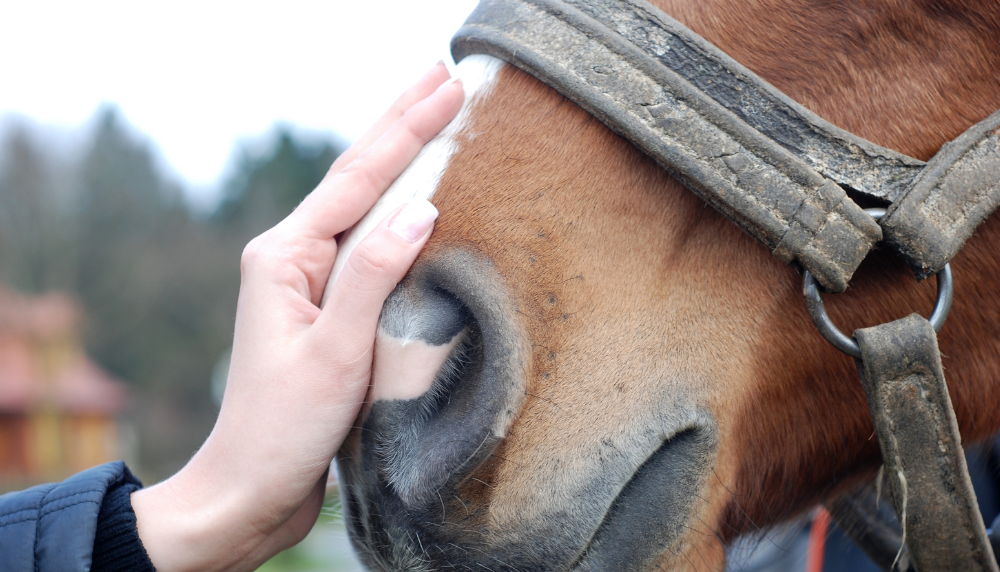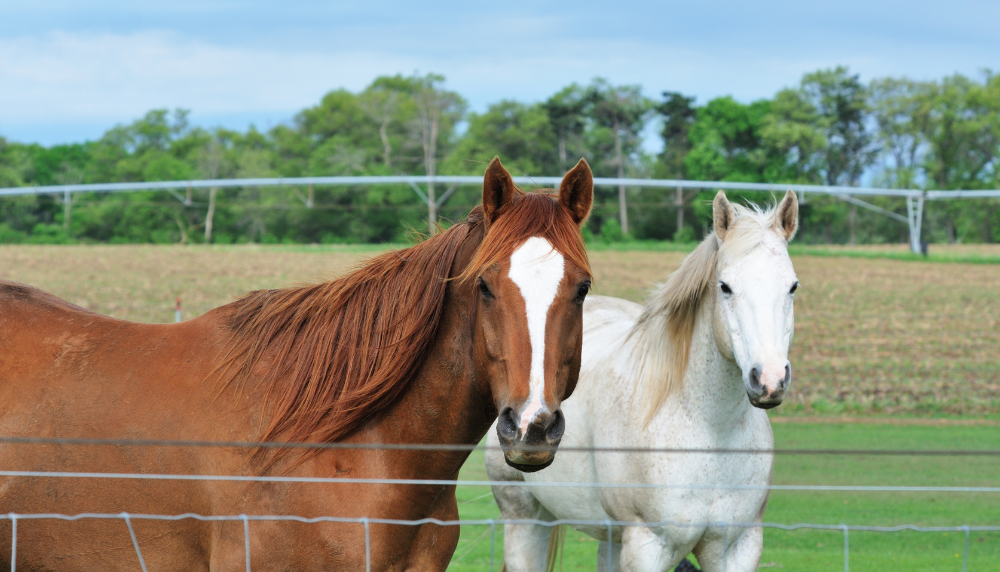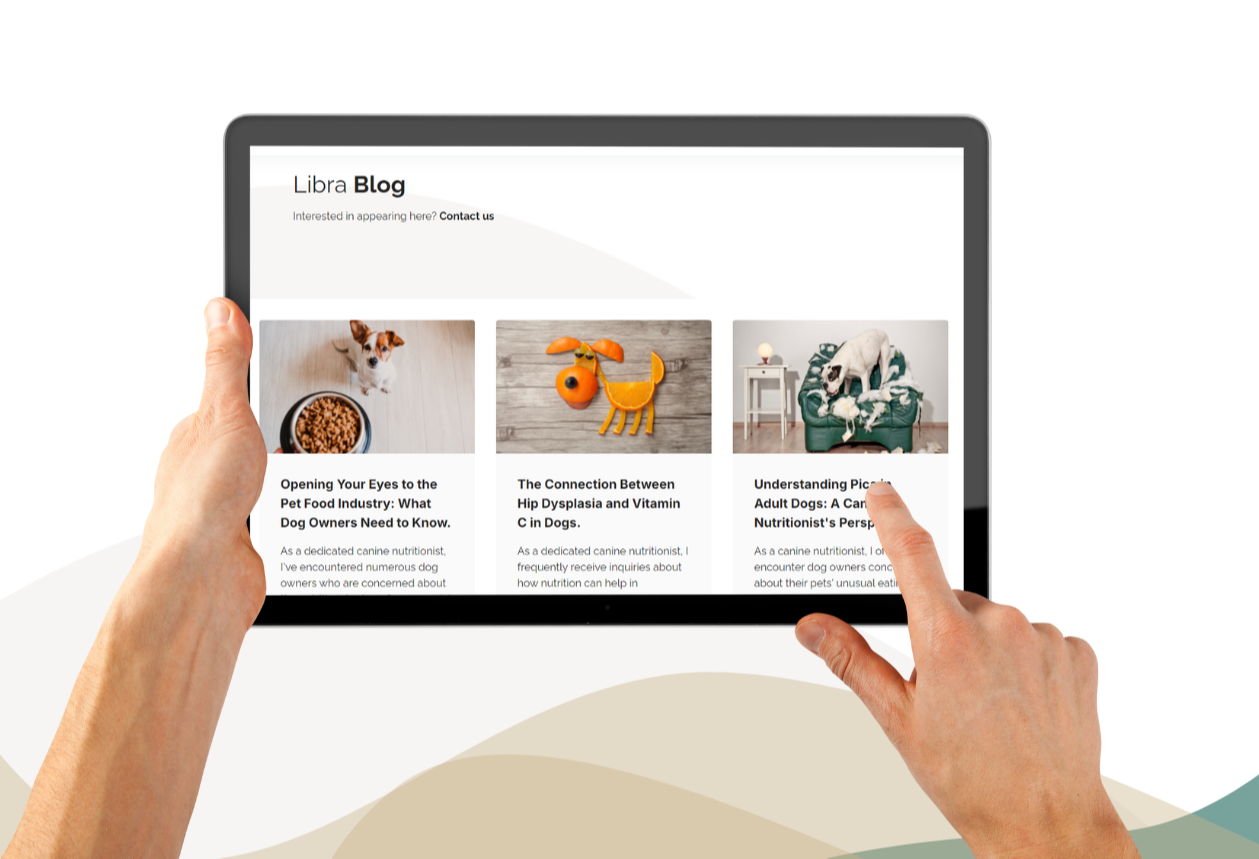
Equine Mineral Testing & Analysis
Single (1 horse)
£195.00

Equine Mineral Testing & Analysis
Duo (2 horses)
£351.00 (save 10%)

When it comes to eating healthy, even as humans we can struggle with ensuring that we get all of the nutrients that we need to maintain a healthy lifestyle.
Every horse owner will understand the importance of a good diet to obtain and maintain peak performance, but even when your horses are fed the best diet, they still get exposed to toxic elements through their environment. This can include: food storage containers, building materials; treated wood, lead based paint, pesticides from crop spraying and also land pollution.
Your animal can be exposed without your knowledge which can lead to a build-up of toxicity in their system, affecting their health, general wellbeing and also, their performance.
Understanding the need for minerals and vitamins is the first step to ensuring that your horse is receiving everything they need to thrive.
What are Vitamins?
Vitamins are organic compounds that are involved in energy production, immune function, and antioxidant defenses. Some vitamins can be synthesized in the body, but others must be supplied by the horse’s diet. For example, vitamin D is produced in the skin after exposure to UV light, but this endogenous production may not be sufficient to fully meet the horse’s needs.
What are essential minerals?
Essential minerals are inorganic nutrients that must be obtained from the diet because they can not be made in the body. They serve many physiological and biochemical functions in horses. They play a crucial role in aiding in movement, energy production, health, reproduction and performance.
Minerals are known as the "spark plugs" to life, and without sufficient levels, or the correct mineral composition (mineral to mineral ratio), the body is unable to function to its best ability, as well as ensuring a happy life. Hormone balance testing and gut function testing are usually undertaken as the first line health investigations, however; both of these systems rely on minerals and vitamins to support the body and preventing chronic health conditions.
Your horse’s daily requirements for vitamins and minerals are determined based on their bodyweight, physiological status, activity level and overall health.
Calcium and phosphorus are essential macro-minerals for horses, indicating they are required in substantial amounts in their diet. In addition to providing enough calcium and phosphorus in the diet, horse owners also need to ensure these minerals are provided in an appropriate ratio.
Forages in most areas tend to contain more calcium than phosphorus, and this is especially true of legume hays such as alfalfa. In comparison, cereal grains have much higher levels of phosphorus than calcium.
Both calcium and phosphorus are major components of bone, with 99% of the body’s calcium and 85% of its phosphorus stored there. Horses need adequate amounts of these nutrients to build and maintain strong bones.
Calcium and phosphorus are also important for:
- Muscle contraction
- Neurological function
- Electrolyte balance
- Enzyme activity
- Energy metabolism
In foals, chronic calcium deficiency can lead to abnormal bone and cartilage development, lameness, and developmental orthopedic diseases. [1] In mature horses, chronic deficiency in either of these nutrients can lead to brittle, weak bones.
Calcium deficiency in the presence of adequate phosphorus can lead to a condition known as Big Head Disease, characterized by soft, swollen facial bones. This condition is also known as Nutritional Secondary Hyperparathyroidism and results from elevated parathyroid hormone levels.
In horses, chronic calcium deficiency can arise from low calcium intake or high phosphorus intake, which interferes with the absorption of calcium. Horses can also develop a calcium deficiency if they consume plants containing high amounts of oxalates. [21]
Oxalates are anions that can bind calcium, preventing its absorption in the gut leading to a secondary deficiency. These compounds are most abundant in tropical forages such as buffelgrass, pangola grass, and setaria. [22]
Horses can also experience acute or sudden drops in blood calcium levels, known as hypocalcemia. This condition impacts nerve and muscle function, potentially manifesting as tetany or thumps.
Tetany is characterized by sustained skeletal muscle contractions due to hypocalcemia. This condition commonly affected lactating mares and horses transported over long distances.
Mares producing large amounts of milk who are also eating low-calcium diets or performing physical work have the highest risk for tetany. [23]
Signs of tetany in horses include:
- Ataxia (poor coordination)
- Depression
- Anxiety
- Muscle twitches and tremors
- Muscle stiffness
- Rapid breathing
- Difficulty swallowing
- Excessive salivation
- Excessive sweating
- Colic
Severe hypocalcemia can also lead to synchronous diaphragmatic flutter, known colloquially as “thumps”. This condition is characterized by a rhythmic flank movement, resulting from the diaphragm — a breathing muscle — contracting in sync with the heartbeat.
Thumps can occur in endurance horses as well as horses with gastrointestinal disease, sepsis, lactation tetany, blister beetle toxicosis, hypoparathyroidism, and metabolic alkalosis. [23]
Phosphorus deficiency most commonly affects growing, lactating, and performing horses on poor-quality grass. Horses that are deficient in phosphorus might exhibit signs of geophagia (eating dirt or manure) before other signs appear. Shifting lameness and bone changes can also occur. [5]
A chronic phosphorus deficiency can lead to:
- Weight loss
- Low appetite
- Weakness
- Lameness
- Developmental orthopedic diseases.
Trace minerals such as zinc and copper are only needed in small amounts in the diet, with their requirements measured in milligrams (mg) rather than grams (g). But they are critically important for the health and soundness of your horse.
Although forages provide some zinc and copper, forage alone is typically not sufficient to meet requirements. Forages grown near industrial mining can also accumulate excess levels of zinc which has been linked to joint disease in foals.
Excessive levels of iron and manganese are commonly encountered and have the potential to compete for metal transporters on intestinal cells.
Zinc and copper are important antioxidants that neutralize free radicals, which can otherwise damage cells via oxidative stress. Ensuring your horse gets adequate antioxidants also supports recovery from exercise, healthy aging, and metabolic health.
Zinc and copper are also required by enzymes that make keratin, which is the main protein responsible for building strong hooves and maintaining a healthy coat.
Zinc is also required to make eumelanin, the type of melanin found in brown, bay and black coats.
Zinc and copper requirements for horses reflect the amounts of these nutrients required to prevent severe deficiency, and not necessarily the amounts required to support optimal health.
High levels of zinc interfere with copper absorption in the gut, potentially leading to a copper deficiency even if the nutritional requirement is met. If your horse’s forage has high zinc levels, your nutritionist may recommend supplementing with copper to reduce the risk of deficiency.
Severe zinc deficiency is rare in horses but can be induced experimentally by feeding special diets. In an experimental scenario, zinc deficiency in foals resulted in: [1]
- Slow growth
- Altered bone growth
- Decreased appetite
- Skin lesions on the lower legs
- Hair loss
Although severe deficiency is rare, subclinical deficiency is common in mature horses. A subclinical deficiency refers to a state where an individual has insufficient levels of a particular nutrient or substance in their body, but the deficiency is not severe enough to cause overt or recognisable symptoms.
Since zinc is essential for the optimal functioning of the immune system, horses with chronic infection or inflammation need more zinc in their diet and are at risk of developing more severe mineral deficiency. [11]
In growing horses, a lack of copper can impact joint health. Copper deficiency is associated with a condition called osteochondrosis, which is a developmental orthopedic disease that can affect your horse’s future performance. Foals can also develop osteochondrosis if their dam has insufficient copper in her diet.
Because copper is required to make melanin – the pigment that gives hair and skin its colour – deficiency can also negatively affect coat colour and contribute to sunbleaching.
Salt is composed of two mineral elements: sodium (Na) and chloride (Cl). When combined, they form the ionic compound sodium chloride.
Horses are often deficient in the mineral sodium, because most hays and grasses contain low levels of this mineral. Unless your horse is fed loose salt, they may not get enough of this mineral in their diet.
However, when given free-choice access to loose salt, horses will consume roughly 50 grams of salt (sodium chloride) per day. This is typically enough to meet their sodium and chloride requirements.
Sodium and chloride are important electrolytes that impact fluid levels in the body, acid-base balance, and nerve and muscle function. [1]
Chloride is also important for supporting digestion. It is a component of bile, which helps break down fats, and it is required to make the main stomach acid, hydrochloric acid
Sodium and chloride requirements for horses take into account the horse’s activity level and reproductive status. For example, requirements are influenced by estimates of sweat loss in exercising horses, loss into milk in lactating mares and increased needs in late pregnancy.
Horses lose large amounts of sodium and chloride when they sweat. As a result, horses are most likely to develop a sodium and/or chloride deficiency when exercised intensely in hot weather or if additional salt is not provided in the diet.
In cases of sudden and severe (acute) sodium deficiency, horses might exhibit: [1][5]
- Early fatigue during exercise
- Uncoordinated muscle contractions or muscle spasms
- Unsteady gait
- Tying-up
- Reduced water intake
- Reduced or lack of sweat production (anhidrosis)
If your horse is chronically deprived of salt, they may stop eating or eat dirt and other objects (pica) to try to get these minerals.
Sodium-deficient lactating mares may show a decline in milk production. If kidney function is affected, horses may also experience excessive drinking (polydipsia) and excessive urination (polyuria).
Selenium is another trace mineral that is only required by the horse in very small quantities, but that is critical for immune function and overall health.
Selenium is an essential component of several proteins in the body. It is required by the antioxidant enzyme glutathione peroxidase, which protects cells from oxidative damage.
Selenium also supports normal thyroid function to produce thyroid hormones involved in regulating metabolic processes.
Selenium and vitamin E work together in the horse’s body as antioxidants. Vitamin E gets incorporated into the membranes surrounding cells and intracellular structures while selenium is essential the function of the glutathione system which protects the watery interior of the cells.
Horses deficient in selenium or vitamin E can experience several conditions affecting muscle and nerve function.
Foals nursing from mares who are selenium deficient can develop from a condition called white muscle disease, which affects skeletal and cardiac muscle. The main signs of white muscle disease include: [13]
- Recumbency (lying down)
- Elevated heart rate
- Failure to nurse
- Difficulty swallowing
- Red to brown-tinged urine
Other concerns linked to selenium deficiency include nutritional myopathies, such as rhabdomyolysis (tying-up) in adult horses. These conditions occur, in part, due to chronic oxidative damage to tissues.
The upper tolerable level of selenium intake for horses is estimated to be 20 mg per day for chronic toxicity. Although rare, excess selenium supplementation or chronic consumption of high-selenium forages can result in toxicity. ]
Selenium toxicity can cause:
- loss of mane and tail hair
- cracked or sloughing hooves
- profuse sweating
Magnesium is an essential mineral for horses, playing several important physiological roles. Most forages supply sufficient magnesium to fulfill the recommended intake for horses. However, there are situations where additional supplementation may be necessary for your horse.
Legume hays typically have higher magnesium content than grass hays, such as timothy hay. Some grain by-products are also considered good sources of magnesium.
Magnesium is an electrolyte that is required for normal muscle and nerve function. It is also involved in energy metabolism and insulin sensitivity.
It is also found in high levels in bone, where it is associated with the crystalline structures that give bone its strength.
Severe magnesium deficiency is rare in horses, since forages typically provide enough of this nutrient to meet NRC requirements for horses at maintenance.
However, lactating mares and horses in heavy work have higher requirements and more prone to hypomagnesemia, a condition characterized by low levels of circulating magnesium.
In horses, severe magnesium deficiency can result in:
- Irregular heart beat (ventricular arrhythmias)
- Muscle tremors
- Poor coordination
- Seizures
- Abnormal calcium deposits in soft tissues
Low magnesium levels are also seen in horses with gastrointestinal illness, such as colic and small intestinal volvulus. Horses affected by thumps and blister beetle toxicosis may also be deficient in this mineral.
Horses with insufficient magnesium in the diet are also susceptible to anxious or excitable behaviour. Low magnesium may result in hypersensitivity to sound or touch or general irritability and nervousness.
How do horses become deficient in minerals?
Horses are susceptible to vitamin and mineral deficiencies because the amounts of these nutrients in forages and grains are not always sufficient to meet their needs.
Horses in certain geographic regions are prone to deficiencies in trace minerals because the soils in these regions have low mineral levels. Forages that grow in these soils are deficient in trace minerals and do not supply enough of these nutrients to horses.
Horses on hay-only diets are also prone to nutrient deficiencies because several vitamins degrade in grass after it is cut and stored as hay.
Depending on where they live, horses on a hay-only diet may experience deficiencies in:
- Zinc
- Copper
- Selenium
- Vitamin A
- Vitamin E
Unless irrigated with incompletely desalinated water, hays and grains are always deficient in sodium and have variable levels of chloride.
Deficiencies of manganese, calcium, phosphorus or magnesium are also possible. Only potassium and iron are always adequate on forage-based diets
However, even with commercial feeds, your horse’s diet may still be lacking important nutrients.
This can occur for several reasons, including:
- The feed is fed below the recommended feeding rate
- The feed does not contain a nutrient
- The feed has low inclusion of a nutrient
- The feed contains low-quality ingredients with poor bioavailability
- The forage or total diet has excessive levels of a mineral that prevents adequate absorption of one or more other minerals by competing for transporters
How do I know if my horse has a deficiency?
Sometimes it can be difficult to know As deficiencies happen over the course of months or years, the symptoms can progress slowly, therefore aren't as recognisable as a sudden change.
Much like humans, horses will compensate for changes in their system, however, its when these changes become so great that they can start to impact on health.
While short-term nutrient deficiencies may only produce subtle symptoms, prolonged deficiencies or imbalances can have more harmful effects.
Signs of deficiencies can be seen in various ways, some mildly, some a lot stronger.
HTMA testing can provide you with this information so that you aren't left guessing, or assessing you pet for signs and symptoms.
You can see some examples below:
You may have already noticed signs of equine fatigue which include panting, sweating and dehydration and this can be down to a mineral imbalance caused by build-up or deficiency.
Why can't I just use supplements?
You most certainly can use supplements, however; what we do not recommend, is "blind supplementing" any of your pets, or even yourself for that matter. Minerals and mineral composition is a complex subject. Its not just about the amount of mineral that you have in your body, it is also about looking at the mineral to mineral ratio's. Some minerals work together in pairs, others will antagonise (work in apposition and prevent absorption). By blindly supplementing with the "most common" minerals and vitamins, you run the risk of making things worse, or severely imbalanced.
Although supplements are not regulated like medication is, they are extremely powerful for the body.
We will always recommended undertaking a test to be able to see the current mineral status of your horses health, only then do you know that the food and/or supplements that you are feeding, as correct, and are supporting a long and healthy life.
With tests starting from just £195.00, you could receive the blueprint to health that you need to ensure the longest, heathiest life possible for your companion.
Why Choose Libra Health?
What Our Customers Say:
"..After a difficult 12 months of numerous bouts of colic, muscle and bone tightness and eating her own bed, I can finally say that I am a lot less stressed. This test finally gave me some answers and even more so, a goal, a path to follow to make sure that my beautiful girls health is as optimal as it can be..."
"Being able to ensure that all of our horses at Great Ridge Riding Stables are as healthy as can be has just been so wonderful. Our clients are full of praise for the care that our amazing animals receive from the staff here, and knowing that there is science behind our food and supplement choices makes us so thankful. We hope to continue the winter season with virtually zero illness or concerns, meaning that its business as usual all of the time. Thank you, truly.."




Check out our Libra Blog where Canine Nutritionist Lib Ally gives her insight into the pet industry and discusses relevant topics to assist you in supporting your pets health.
AI Website Software